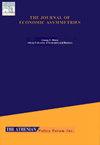探索东盟五国、主要发达市场和发展中市场之间的全球金融相互依存关系
Q1 Economics, Econometrics and Finance
引用次数: 0
摘要
2020年初,新冠肺炎疫情爆发,导致市场普遍波动,股价大幅下跌。由于这次大流行病,东盟五国市场的重要性已经显现出来。在2019冠状病毒病和俄乌战争之后,这些市场受到了投资者和研究人员的关注。因此,必须了解东盟五国市场与其他主要市场的联系程度,以便充分掌握这一大流行病对全球股票市场的影响。因此,本研究旨在检视东盟五国、美国、英国、印度和中国股市之间的连通性。检索了2017年1月至2022年12月期间的数据。DCC-GARCH用于获取子时间段的连通性:covid-19之前、期间和之后。2019冠状病毒病前时期的结果突出表明,印度市场与其他市场的联系最少;菲律宾是净波动率最差的国家。在2019冠状病毒病期间,中国是后疫情时期的净波动接受者;新加坡是净波动接受者。结果对最小生成树(MST)分析具有鲁棒性。在危机期间,投资者应该重新平衡或重新配置他们的投资组合,因为联系增加和多样化收益下降。为了防止本地市场受到其他市场的影响,政策制定者应该采取行动。本文章由计算机程序翻译,如有差异,请以英文原文为准。
Exploring global financial interdependencies among ASEAN-5, major developed and developing markets
The outbreak of the virus in early 2020 led to widespread market volatility and significant declines in stock prices. The importance of the ASEAN-5 markets has emerged as a result of the pandemic. Post-covid-19 and Russia-Ukraine war, these markets have gained attention from investors and researchers. Therefore, it is crucial to understand the extent to which the ASEAN-5 markets are connected to other major markets in order to fully grasp the impact of the pandemic on global stock markets. Hence, this study aims to examine the connectedness among ASEAN-5, the US, the UK, India, and China's stock markets. The data for the period January 2017 to December 2022 were retrieved. DCC-GARCH is employed to fetch the connectedness for sub-periods: pre, during, and post-covid-19. The results in the pre-covid-19 period highlight that Indian markets are least connected with the others; the Philippines is the worst net volatility receiver. During covid-19, China is the net volatility receiver, in the post-covid-19 period; Singapore is the net volatility receiver. The results are robust to the Minimum Spanning Tree (MST) analysis. During the crisis, investors should rebalance or reallocate their portfolios due to increased connection and declining benefits of diversification. To prevent the local markets from being affected by other markets, policymakers should take action.
求助全文
通过发布文献求助,成功后即可免费获取论文全文。
去求助
来源期刊

Journal of Economic Asymmetries
Economics, Econometrics and Finance-Economics, Econometrics and Finance (all)
CiteScore
4.80
自引率
0.00%
发文量
42
审稿时长
50 days
 求助内容:
求助内容: 应助结果提醒方式:
应助结果提醒方式:


